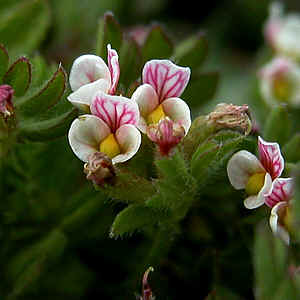THE FLORA OF HOWTH
The Field Club is currently working on a revised Flora of Howth. While the Flora of County Dublin covered the whole county, the current work in progress is a much more detailed study following in the footsteps of H.C. Hart (also author of the Flora of Donegal) who published his monograph in 1887 – a year after the Field Club was founded. For the purpose of this study, Ireland’s Eye is included as being in the Howth Peninsula. Howth has a surprising diversity of plant species where in a short distance we can move from seaside plants such as Thrift Armeria maritima and Lavender Limonium to heathland containing Autumn Gorse Ulex gallii and Bell Heather Erica cinerea.

In the intervening 130 years, much has changed in the peninsula with only one working farm remaining and the importation of much concrete and asphalt. The north beach at Sutton has virtually disappeared under grass and the remainder of the south beach is under continuing pressure from the expansion of houses and gardens and the tread of many feet. The Cosh was once one of the most interesting botanical areas in the county. Golf courses have digested much of the peninsula and both bracken and scrub has spread. A substantial number of indigenous species have disappeared but other opportunists and aliens have established themselves on walls, brownfield sites, cemeteries, cliff slopes and waste ground.
The search has been on to find which species have survived other pressures such as the reduction of rivulets, marshes and swamps caused by the diversion of water into storm drains. In addition, nature is surprising us with the resilience and tenacity of some plants and the finding of the occasional native plant that has not been previously recorded. Which of the above changes are attributable to our changing climate? Some microspecies such as Dandelions and Brambles have not previously been studied in detail. Perhaps someone will this year refind the elusive Goldilocks Ranunculus auricomus or Early-purple Orchid Orchis mascula.
